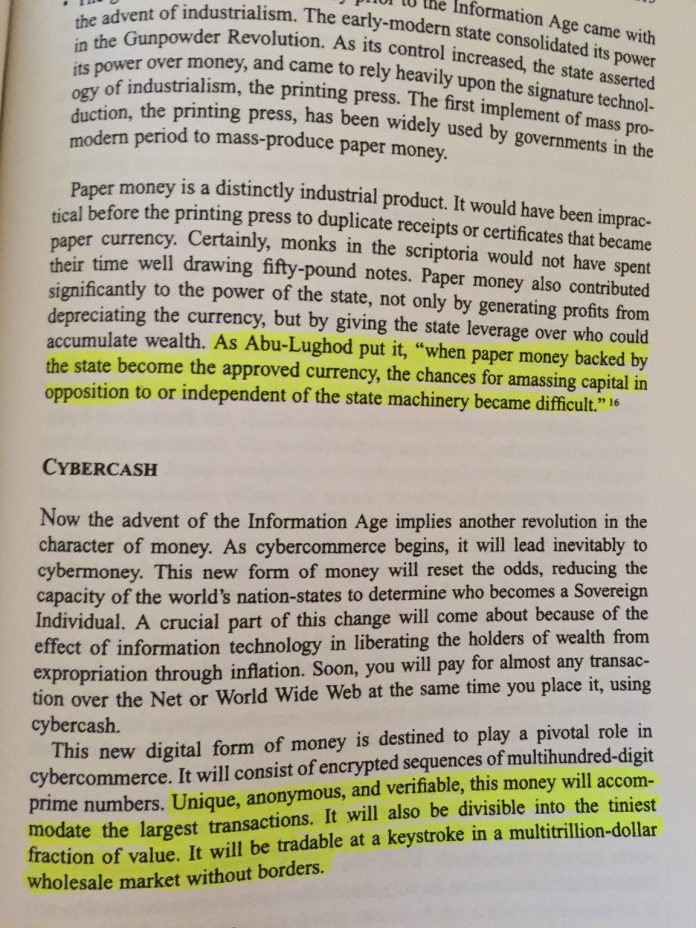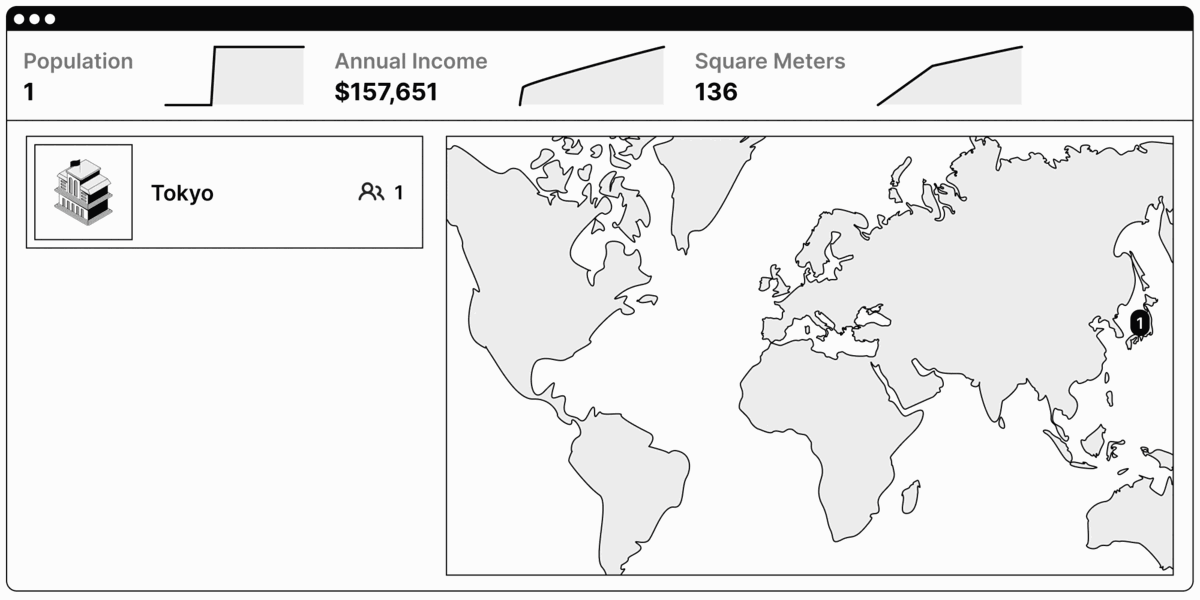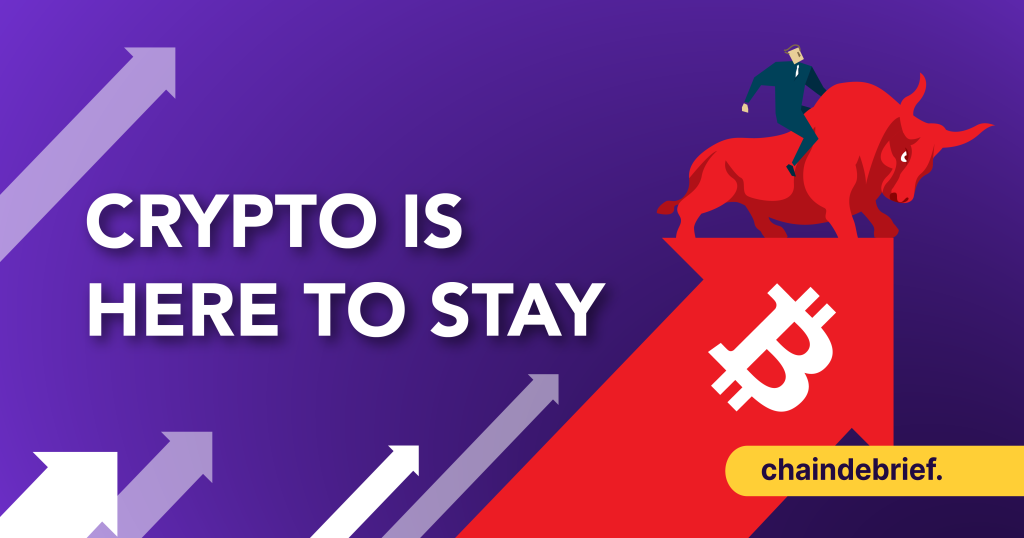Key Takeaways
- Decentralized Finance is Barely Scratching The Surface Of What It Could Be
- Web3 Allows the Sovereign Individual To Flourished, Unshackled By Boundaries
- New Users Will Always Come, Be It For The Money or Technology
_____________________________________________________________________________________________________
[This article was requested by internal members of the ChainDebrief team after they claimed I was the most bearish person they have ever met]
When the tides have receded and the money is gone it is hard for people to remain in the space unless they display high levels of conviction; the belief that crypto is more than what it is right now and that its ideals and use-cases matter.
Where does this conviction come from? To make this clear, we must re-examine from first principles and look at the foundations of crypto.
Stop thinking about ‘what to buy, what to sell, when to long, when to short’ and listen for a minute.
The Case for DeFi
Decentralized finance is here to stay.
These protocols work. They are transparent and work without any need for a bailout. They have also passed stress tests during intense market volatility.
People often forget that these are products that ANYONE can access, and that people do not need the trust of an intermediary (such as Celcius, Hodlnaut) to use these platforms.
The most bullish thing about this downturn is how well DeFi held up.
— RYAN SΞAN ADAMS – rsa.eth 🦇🔊 (@RyanSAdams) July 5, 2022
Uniswap continued to trade.
Aave and Compound liquidated gracefully.
DAI kept its peg.
Trust is earned during the stress tests.
Many CeFi companies failed the test.
But DeFi performed.
DeFi protocols did not halt withdrawals. Lending protocols continued to issue loans. Protocols did not go down.
Even if DeFi protocols suffer from some manner of risk, most of these are transparent and people are able to alert each other to exploits or pitfalls in real-time. In the case of algostables like LUNA’s failure, warnings and predictions from people were already present due to the transparent nature of crypto.
Do DeFi protocols need work? Yes. Will more fragile designs collapse? Yes. But will this pave a way for a more resilient system? Yes.
DeFi represents principles that people have forgotten amidst the fear of the markets.
- Trustlessness: Why rely on third party intermediaries that can fail or are not transparent? If you were aware of this you would NOT have placed money in platforms like Celcius, Hodlnaut, Youhodler
- Decentralization: Nobody can really take control of the network once it is fully decentralized. I think ETH and BTC acts as a perfect example of this.
- Permissionless: Anyone can participate in the network. A reader here can simply go to AAVE or Compound right now and borrow or lend out their money.
It appears that whenever people start to give up these to trade-off for convenience, such as a clean UI or somebody to manage your funds, we go down a slippery slope and pay the price.
Of course, DeFi is not free from criticisms. We can go on all day about rugpulls, exploits, unsustainable tokenomics, and even governance shenanigans.
Also Read: The Ugly Side Of DeFi; The Bancor & Solend Controversy Explained
But think about it for a minute. DeFi is barely scratching the surface of what we can do with smart contracts and blockchain technology at the moment.
Bitcoin is still very young compared to other mature store of value assets (e.g gold and fine art). DeFi is but a small microcosm of the entire crypto market cap… you do the math on the upside.
I fully expect the entire ecosystem to become more robust and retail-friendly in the future, whether that is optimizing for user experience, safety, or better, sustainable yields.
It is hilarious that the risks of CeDeFi on lending platforms that are centralized have been exposed over and over and over again, but people fall for the same tricks every time.
They believe that Platform X is safer than Platform Y because of inane reasons, or come up with excuses like “Oh, I can still withdraw my funds.”
The bottom line is that you are still trusting your money for a third party to handle with zero transparency.
If you do not know how the yield is generated and there is also no way to tell from their financial statements, (this is opposite from DeFi due to on-chain data), you are the sucker and the yield.
It’s time to hop on-board the new ship and learn what makes these systems work.
The Case For Decentralization
Okay, decentralization, blah blah blah.
Why does that stuff matter anyway? What is the big difference between using a bank and some experimental platform that could go down every few weeks?
The first and biggest issue for centralized systems is that due to a single point of failure, these systems can and WILL break down. Either that, or an entity can, decide for its own benefits against its initial promises, change the rules for everyone. From commercial entities to even the government, we have seen this happen time and time again throughout history.
The past 2 years alone were no exception and the videos below are the perfect examples.
Credits: CBC News
As mentioned in the DeFi section, when people forget this, the exact same problem happens again even in the crypto ecosystem. Celcius freezing withdrawals is just another example of a centralized party that changed the rules as and when they deemed fit.
“Oops, I did it again.”
No matter what your political leanings may be, I think it is fair to say that people deserve a chance to own their items and have a guarantee that their assets or systems will not simply be frozen or fail to function suddenly.
The need for people to access sound money and a decentralized system that cannot be controlled by the whims of an elite few is needed more than ever.
The principle of sovereignty is the backbone on why these decentralized infrastructure we have today must exist.
Based on this concept, let’s extend and apply this to what we see in crypto today.
Start with the principle of ownership of your own assets. Bitcoin and your digital assets cannot be seized by the local authorities or governments. You can access your funds and use them, given that you have your private keys.
And now, we can use this system to participate in P2P transactions, engage in financial activities, and cultural/social activities (via NFTs and the Metaverse) without the interference of a third party. This trend will only continue and favours decentralization in the long run.
This is very powerful for the rise of the sovereign individual and the network state.
The Sovereign Individual and The Network State
In a book titled The Sovereign Individual, which was published in 1996 (yes, 1996) by James Dale Davidson and William Rees-Mogg, the following predictions were made:

Their work has been incredibly prescient regarding Web 3.0 today. It predicts a future where individuals would be largely independent from the State due to changes in technology.
This enabled by the rise of the new cyber-economy and information society. It is a way for people to connect across the globe without being constrained by borders. With Web 3.0, people can participate in a decentralized global economy and engage in value exchange.
If you are also unhappy with the state of things in your location, you can simply pack up and leave as well, digital nomad style. And the best part? With your private keys and hardware wallet, you are able to access the Web 3.0 economy and decentralized system anywhere across the globe.
You carry your wealth with you.
With the rise of sovereign individuals who are location independent and can connect to anyone across the world with the same ideology, collectives across the world are formed. Networks of like-minded people are now able to work together and distribute/create value across the globe.
Remote work and work-from-home, which was once thought to be stupid, is now common due to COVID-19. This will be a norm in the future once people embrace that in the digital age, people can freely work almost anytime, anywhere, and access a digital, decentralized economy in cyberspace.
Corporations will have to become more agile and monopolistic control starts to drop as openness in making platforms take over in Web 3.0.
Centralized control from governments and entities become more difficult as off-shoot communities form and break away from nation states.
What happens when groups of these like-minded people, not bounded by geography, begin to connect together and create decentralized networks?

This GIF sums up how a “network state” can be bootstrapped. A “cloud city” on cyberspace has now been formed, so to speak.
Toss in the Metaverse and the experience becomes more personalized and vivid.
Also Read: Building The Foundations Of An Open Metaverse With Animoca Brands CEO
Because we are able to own and monetize parts of these networks in Web 3.0, either via tokens, NFTs, or participating in various activities, growth of these networks will correlate with a growth in value and price.
If you are interested in these ideas in-depth, check out The Sovereign Individual and The Network State.
The Case For Adoption
New use-cases for blockchain will pop up. Today’s product offerings are a glimpse of what we can do in the future.
Currently the only verticals really explored are DeFi, the Metaverse, and very rudimentary gaming projects that resemble what I used to play on Facebook 10 years ago.
Not only are these industries early and yet to mature, we are also not going down the route of other verticals that are enabled by blockchain.
These verticals, while unknown, could also represent markets of untapped value and drive a large inflow of capital eventually.
This was covered in a previous article I wrote, but I will repost a snippet of my predictions here.
“Real world use-cases of crypto should not just rely on leverage in the system and shuffling shitcoins around the ecosystem.
Off the top of my head, some examples may look like this:
- NFTs as representations of other significant assets (think title deeds etc)
- Enterprise usage of smart contracts
- Safer and seamless payment infrastructure across chains
- Plug-and-play DeFi that does not rely on centralized entities like Celsius/BlockFi with risk of default
- DeFi that is connected to real-world assets
- Appropriate insurance mechanisms that hedge and underwrite against massive risks in crypto
- Permissionless access to yield and income for third-world countries
- Gaming that does not just rely on buzz words with good token incentives
In short, any thing which provides Web 3.0 level of transparency, Web 2.0 ease of use, and isn’t some form of unsustainable Ponzi will encourage users to hop back into crypto.“
Cyclicality and casinos
“There are recurring cycles, ups and downs, but the course of events is essentially the same, with small variations. It has been said that history repeats itself. This is perhaps not quite correct; it merely rhymes.”
– Theodor Reik
This is a theme I have broadly explored in my various articles. The principle is simple: market cycles are inevitable. Bubbles form (and pop!), and the irrationality of market participants will be ever-present.
Greed and fear never changes. Valuations can go a lot higher and a lot lower than we think.
The worst case scenario is that crypto never gains meaningful traction as a whole, but exists as a decentralized niche casino with various ponzis that implode once every 2-3 years. It’s not something that enthusiasts and builders will want, but I can see it as a plausible ‘Bad Ending’ for the crypto experiment.
It would appear most crypto institutions are just run by psychopaths who are actually dumber than smart retail, but have way bigger balls, way bigger risk tolerance, way fewer ethics, and an absolute disregard for client money.
— gainzy (@gainzy222) July 7, 2022
Hell of an industry we’ve spun up.
However, even the ‘Bad Ending’ scenario is not separate from the cyclicality of markets.
Will the market become more efficient and mature, bringing about mass adoption? Perhaps.
However, as long as crypto remains permissionless (open for people to come in), the allure of a lottery ticket will always be in people’s minds. Stories of investors who made millions from a few hundred bucks in crypto will be mythologized into crypto canon.
Whether it is a week, a month, or five years, crypto cycles will always begin afresh, and a new bull phase will eventually come back.
Closing thoughts
By looking back at first principles and the core pillars of decentralization and ownership, the grand thesis for crypto becomes clearer.
Even if you don’t believe in the adoption of blockchain technology, you could make a bet that somewhere down the line, the casino and its associated mania comes back.
To make things clear, I am not saying to be bullish now or telling you when to buy or sell. Just start thinking about why all of this stuff even matters in the first place.
Could the entire Web 3.0 system go bust? Possibly. Bitcoin and cryptocurrency is, after all, but a blip in the grand scheme of history. Furthermore, this is the first real stress test for Web 3.0 following worsening macro conditions and a flight from risk-on assets.
However, fundamentals unironically do matter in the long run. Whether you are a developer, an NFT art collector, an investor, or a trader, they form the core basis on why we choose to invest our time, capital, and effort into the space.
At the end of the day, it is up to you to form your own conviction and decide for yourself if this is the future of finance or rat poison squared.
Also Read: What’s Next For Us? A Degen’s Perspective On The Crypto Bear Market And The Future
[Editor’s Note: This article does not represent financial advice. Please do your research before investing.]
Featured Image Credit: Chain Debrief



































